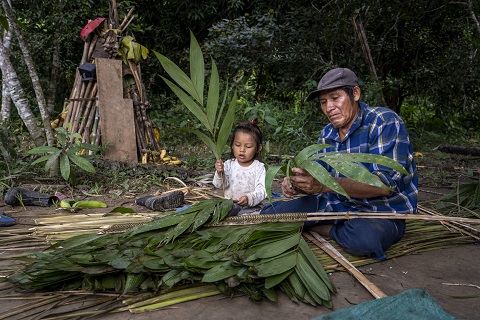Response to Mongabay's recent coverage of the 80% figure
Comment on the recent article in Mongabay “Do Indigenous peoples really conserve 80% of the world’s biodiversity?” by Latoya Abulu, Aimee Gabay and Sonam Lama Hyolmo that reviewed the article in Nature “No basis for claim that 80% of biodiversity is found in Indigenous territories.” The authors of this comment are the 13 authors of the original Nature article.

We laud and support the spirit of Abulu et al.’s article. It is much in line with our own, in that it seeks to mobilise and strengthen recognition of Indigenous Peoples’ rights and needs. Conservation goals cannot be achieved without the support and work of Indigenous Peoples. And yet their contributions have continually been dismissed, under-estimated or misrepresented. Our decision to challenge the use of the ‘80%’ figure is part of our enduring efforts to redress long-standing misrepresentations in the way Indigenous peoples’ lifeways have been portrayed.
In the spirit of tackling misrepresentation, some corrections to the article of Abulu et al. will help to ensure that this debate does not harm the causes we all espouse. Specifically:
- Abulu and colleagues appear to have amplified one side of the debate but ignored other views and perspectives. The criticism of our paper by some advocates was not balanced by interviews with any other voices. The support that we have received from organisations and individuals includes significant players such as Nia Tero, the director of UNESCO’s programme on Local and Indigenous Knowledge Systems, and several members of the ICCA Consortium, among many others.
- Contrary to the claims made in Abulu et al.’s article, we do think many aspects of biodiversity can be measured and a great deal of our research prior to this paper has done precisely that. We were able to query the authority of the 80% figure because of decades of work in this area. Our work in this respect includes at least 18 scientific publications that have characterized, both qualitatively and quantitatively, biodiversity patterns in Indigenous Peoples’ lands. Such studies have contributed to demonstrate that Indigenous Peoples’ territories intersect at least 37% of all remaining natural lands, or at least 36% of the world’s most ecologically intact forests, and that they account for 30% of the global non-human primate distribution range, and 60% of all the terrestrial mammals for which there is reliable habitat data. Many of our own papers were cited in the Abulu et al.’s article, directly contradicting the claim that we ‘have no interest in biodiversity density on Indigenous lands’.
- We need to be humble in the face of the extraordinary diversity and richness of life on this planet, and the high levels of ignorance about it that still afflict so many of us. Indigenous Peoples’ lands and seas, and the places that they customarily use, are imperfectly mapped. Western science’s recording of global biodiversity is patchy and incomplete. Yet the Abulu et al.’s article suggested measuring biodiversity on Indigenous people’s lands using incomplete and partial datasets, such as Pironon’s, which only includes around 10% of all described vascular plants and inappropriate maps of territory that includes non-Indigenous lands in countries such as Spain. In the face of our ignorance care is needed.
The lands and seas recognised and customarily used by Indigenous Peoples abound with life and challenge through their very being the ambitions of destructive trajectories that dominate our planet. These places are threatened by governments, corporations and diverse citizens. In the face of such pressures, heated commentaries are unsurprising. Nonetheless they do not have to be the norm. We wrote our paper in Nature because we believe that good science, and engagement with policy debates, is better served by evidence-based debate and careful, reasoned commentary. Abulu et al.’s article has confirmed us in that view.
Advocacy in support of Indigenous Peoples needs to be freed of quoting a figure that many people, not just us, have found uncomfortable. We think it far better to move on and not be shackled by what appears to be a lapse in scholarship in an unrefereed report written 16 years ago. Our fear now is that the cause of Indigenous Peoples is likely to be damaged and distracted by debates about the single figure among advocates when there is so much else to praise about Indigenous Peoples’ environmental stewardship. Our collective focus should now be on advancing and highlighting the real and diverse experiences and contributions that Indigenous Peoples offer us all in addressing the threats that our planet faces.
Signatories:
Álvaro Fernández-Llamazares, Julia E. Fa, Dan Brockington, Eduardo S. Brondízio, Joji Cariño, Esteve Corbera, Maurizio Farhan Ferrari, Daniel Kobei, Pernilla Malmer, Guadalupe Yesenia H. Márquez, Zsolt Molnár, Helen Tugendhat and Stephen T. Garnett.